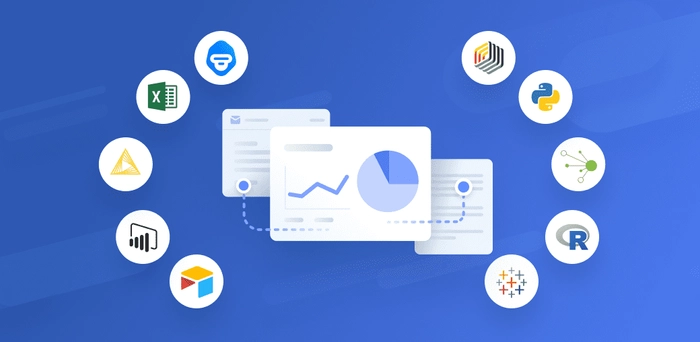In the world of data analysis, SQL (Structured Query Language) is an indispensable tool that empowers data professionals to effectively manipulate, analyze, and retrieve information from databases.
With its versatile capabilities, SQL has become the go-to language for data analysts and business professionals alike.
In this article, we will explore some essential SQL techniques and tools that can help you elevate your data analysis skills. 😊
Filtering and Sorting Data
To analyze data effectively, you need to start by filtering and sorting it according to specific criteria. With SQL, you can easily achieve this by using clauses such as WHERE and ORDER BY.
Example:
SELECT *
FROM sales_data
WHERE revenue > 10000
ORDER BY revenue DESC;
This query retrieves all records from the “sales_data” table with revenue greater than 10,000, sorting the results in descending order of revenue.
Joining Tables
In many cases, you will need to combine data from multiple tables for analysis. SQL makes this easy with the JOIN clause, which allows you to link tables based on common columns.
Example:
SELECT customers.name, orders.order_date, orders.total_amount
FROM customers
JOIN orders ON customers.customer_id = orders.customer_id;
This query combines data from the “customers” and “orders” tables, displaying the customer name, order date, and total order amount.
Aggregating Data
Aggregating data is a crucial step in data analysis, as it helps to summarize and extract insights from large datasets. SQL provides several aggregate functions, such as COUNT, SUM, AVG, MIN, and MAX, to achieve this.
Example:
SELECT product_category, COUNT(*) as total_products, AVG(price) as average_price
FROM products
GROUP BY product_category;
This query calculates the total number of products and their average price for each product category in the “products” table.
Window Functions
Window functions are a powerful feature in SQL that enable you to perform calculations across a set of rows related to the current row. They are particularly useful for tasks like ranking, calculating running totals, or finding cumulative averages.
Example:
SELECT product_name, revenue,
RANK() OVER (PARTITION BY product_category ORDER BY revenue DESC) as revenue_rank
FROM sales_data;
This query ranks products within each category based on their revenue.
Common Table Expressions (CTEs)
CTEs are temporary result sets that can simplify complex queries by breaking them down into smaller, more manageable pieces.
They are defined using the WITH clause and can be used in subsequent SELECT, INSERT, UPDATE, or DELETE statements.
Example:
WITH high_revenue_products AS (
SELECT product_id, SUM(revenue) as total_revenue
FROM sales_data
GROUP BY product_id
HAVING total_revenue > 50000
)
SELECT products.product_name, high_revenue_products.total_revenue
FROM products
JOIN high_revenue_products ON products.product_id = high_revenue_products.product_id;
This query uses a CTE to first identify high-revenue products and then retrieves their names and total revenue.
SQL Tools for Data Analysis
Several tools can help you work more effectively with SQL for data analysis. Some popular options include:
- SQL Workbench: A powerful, open-source SQL query tool that supports various database systems.
- DBVisualizer: A universal database tool that offers features like SQL editing, data visualization, and database administration.
- Mode Analytics: A collaborative analytics platform that allows you to create and share SQL queries, visualizations, and dashboards.
- DBeaver: A free, multi-platform database tool that offers robust SQL editing, data export/import, and database administration features.
- Microsoft SQL Server Management Studio (SSMS): A comprehensive tool for managing SQL Server databases, offering powerful query editing, debugging, and performance analysis features.
- DataGrip: A cross-platform IDE for databases and SQL by JetBrains, which provides advanced code completion, refactoring, and version control integration.
- Tableau: A popular data visualization tool that allows you to connect to various data sources, including SQL databases, and create interactive dashboards.
Summary
Mastering SQL for data analysis is a valuable skill for any data professional, as it allows you to extract valuable insights from vast amounts of data.
By familiarizing yourself with essential SQL techniques like filtering, sorting, aggregating, and using window functions, you can take your data analysis skills to new heights.
Additionally, leveraging the right SQL tools can make the process more efficient and enjoyable. So go ahead, dive into the world of SQL, and unleash the power of data analysis! 😃
Thank you for reading our blog, we hope you found the information provided helpful and informative. We invite you to follow and share this blog with your colleagues and friends if you found it useful.
Share your thoughts and ideas in the comments below. To get in touch with us, please send an email to dataspaceconsulting@gmail.com or contactus@dataspacein.com.
You can also visit our website – DataspaceAI


